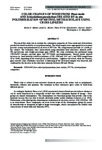Use este identificador para citar ou linkar para este item:
http://www.alice.cnptia.embrapa.br/alice/handle/doc/1043030Registro completo de metadados
| Campo DC | Valor | Idioma |
|---|---|---|
| dc.contributor.author | MATTOS, B. D. | pt_BR |
| dc.contributor.author | MISSIO, A. L. | pt_BR |
| dc.contributor.author | CADEMARTORI, P. H. G. de | pt_BR |
| dc.contributor.author | GATTO, D. A. | pt_BR |
| dc.contributor.author | MAGALHAES, W. L. E. | pt_BR |
| dc.date.accessioned | 2016-04-11T11:11:11Z | pt_BR |
| dc.date.available | 2016-04-11T11:11:11Z | pt_BR |
| dc.date.created | 2016-04-11 | pt_BR |
| dc.date.issued | 2016 | pt_BR |
| dc.identifier.citation | Maderas. Ciencia y tecnología, Concepción, v. 18, n. 1, p. 113-124, ene. 2016. | pt_BR |
| dc.identifier.uri | http://www.alice.cnptia.embrapa.br/alice/handle/doc/1043030 | pt_BR |
| dc.description | The aim of this study was to evaluate the colorimetric properties of Pinus taeda and Schizolobium parahybum woods treated by in situ polymerization. The wood samples were impregnated in a vacuum/ pressure system and polymerized in an oven at 90°C for 10h, using benzoyl peroxide at 1,5wt% as the catalyst. The treatments were characterized using attenuated total reflectance infrared (ATRIR) spectroscopy and weight percentage gain (WPG). The color evaluation was performed using CIEL*a*b* concepts, specular gloss, and UV-Visible spectrophotometry. Treated woods showed increases in band intensity related to polymers (1730, 1460 and 1145 cm-1), and WPG ranged from 39 to 164%, depending of the wood species and treatments. Lightness decreased, while the Chroma, gloss and the color coordinates increased. A darkening of the all treated samples was observed, and confirmed by the decrease in the reflectance intensity between 400 and 700 nm. | pt_BR |
| dc.language.iso | eng | eng |
| dc.rights | openAccess | eng |
| dc.subject | Schizolobium parahybum | pt_BR |
| dc.subject | Espécie exótica | pt_BR |
| dc.subject | Free radical polymerization | pt_BR |
| dc.subject | UV-Vis | pt_BR |
| dc.subject | Heat catalyst | pt_BR |
| dc.subject | Composites (materials) | pt_BR |
| dc.title | Color changes of wood from Pinus taeda and Schizolobium parahybum treated by in situ polymerization of methyl methacrylate using cross-linkers. | pt_BR |
| dc.type | Artigo de periódico | pt_BR |
| dc.date.updated | 2017-07-10T11:11:11Z | pt_BR |
| dc.subject.thesagro | Madeira | pt_BR |
| dc.subject.thesagro | Tratamento | pt_BR |
| dc.subject.thesagro | Espécie nativa | pt_BR |
| dc.subject.thesagro | Pinus Taeda | pt_BR |
| dc.subject.nalthesaurus | Wood treatment | pt_BR |
| dc.subject.nalthesaurus | Polymers | pt_BR |
| riaa.ainfo.id | 1043030 | pt_BR |
| riaa.ainfo.lastupdate | 2017-07-10 | pt_BR |
| dc.identifier.doi | 10.4067/S0718-221X2016005000012 | pt_BR |
| dc.contributor.institution | Bruno D. Mattos, Integrated program in Engineering & Materials Science (PIPE), UFPR; André L. Missio, Forestry Engineering (PPGEF), UFSM; Pedro H. G. de Cademartori, Wood and Forestry Science Center (PPGEF), UFPR; Darci A. Gatto, Professor da UFSM; WASHINGTON LUIZ ESTEVES MAGALHAES, CNPF. | pt_BR |
| Aparece nas coleções: | Artigo em periódico indexado (CNPF)  | |
Arquivos associados a este item:
| Arquivo | Descrição | Tamanho | Formato | |
|---|---|---|---|---|
| 2016WashingtonMaderasCollor.pdf | 1,67 MB | Adobe PDF |  Visualizar/Abrir |









